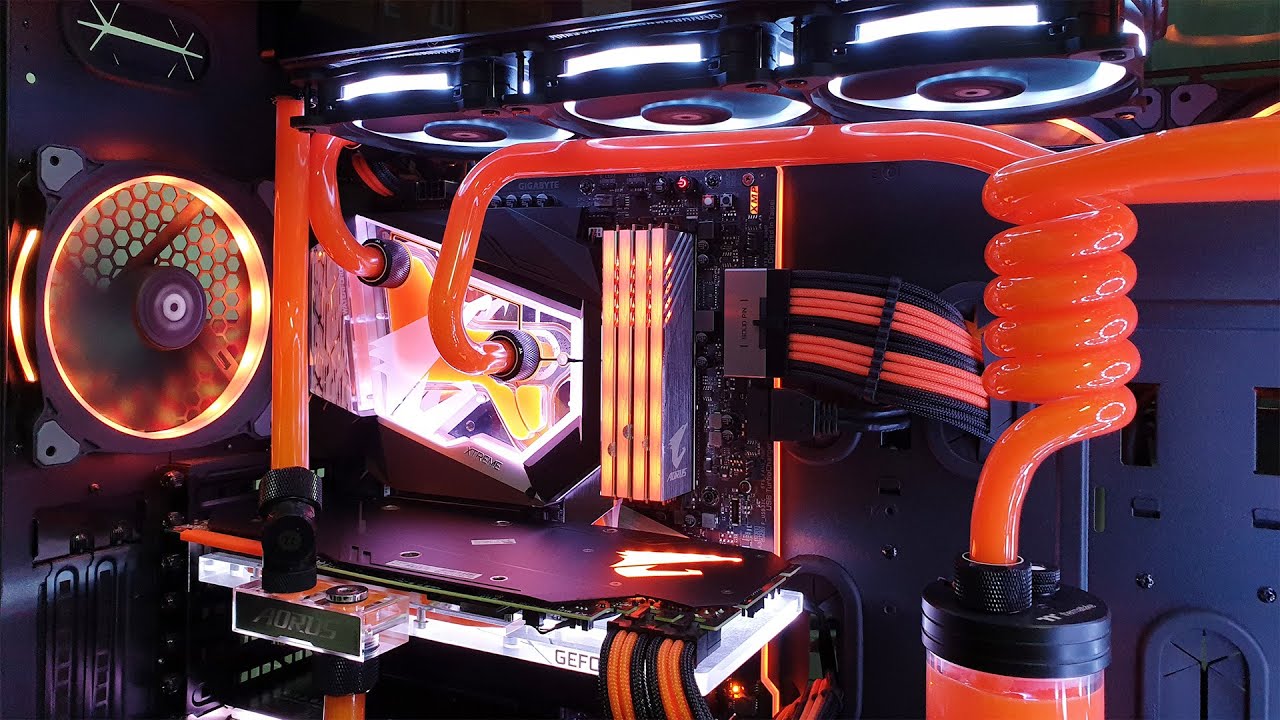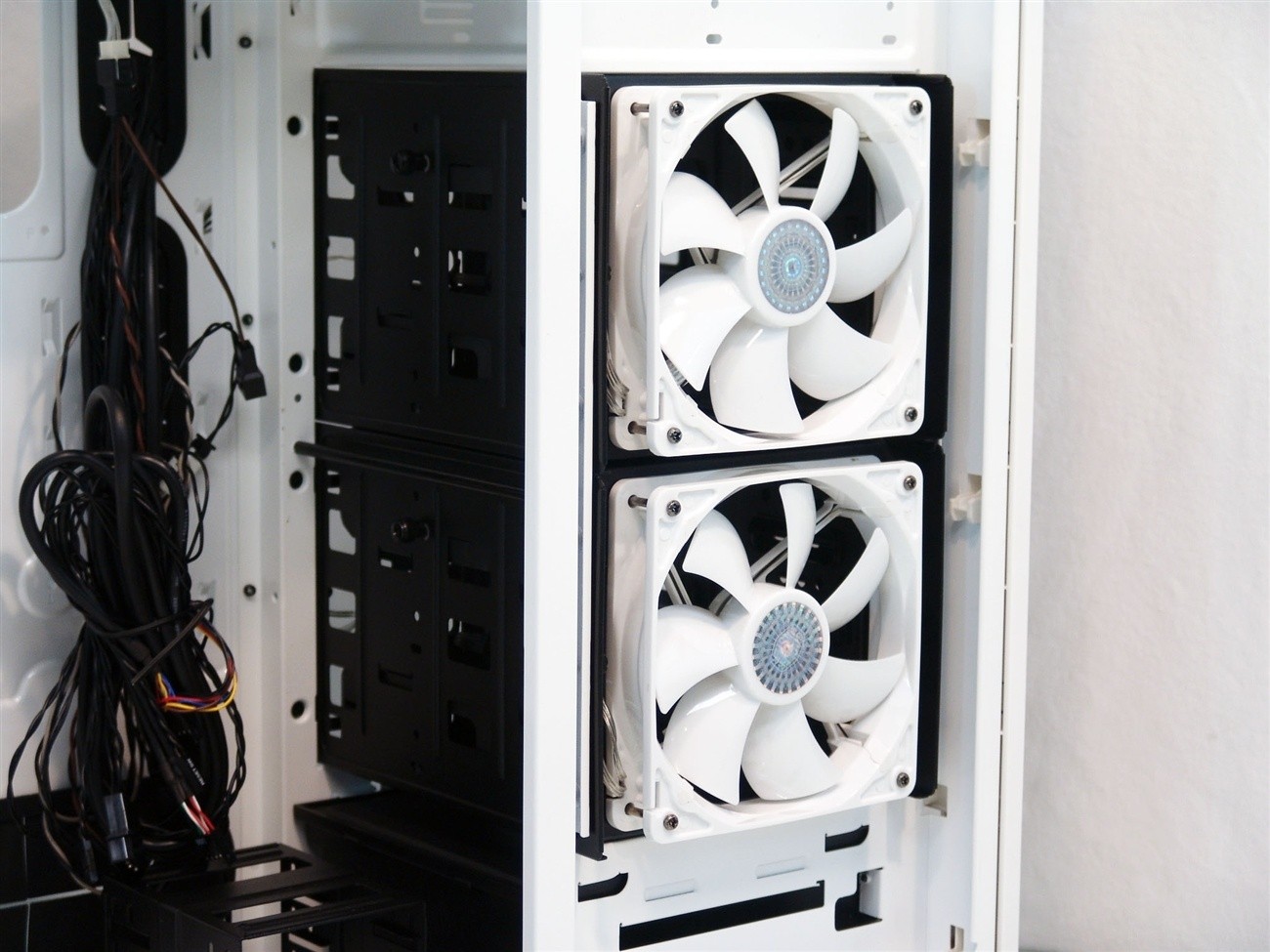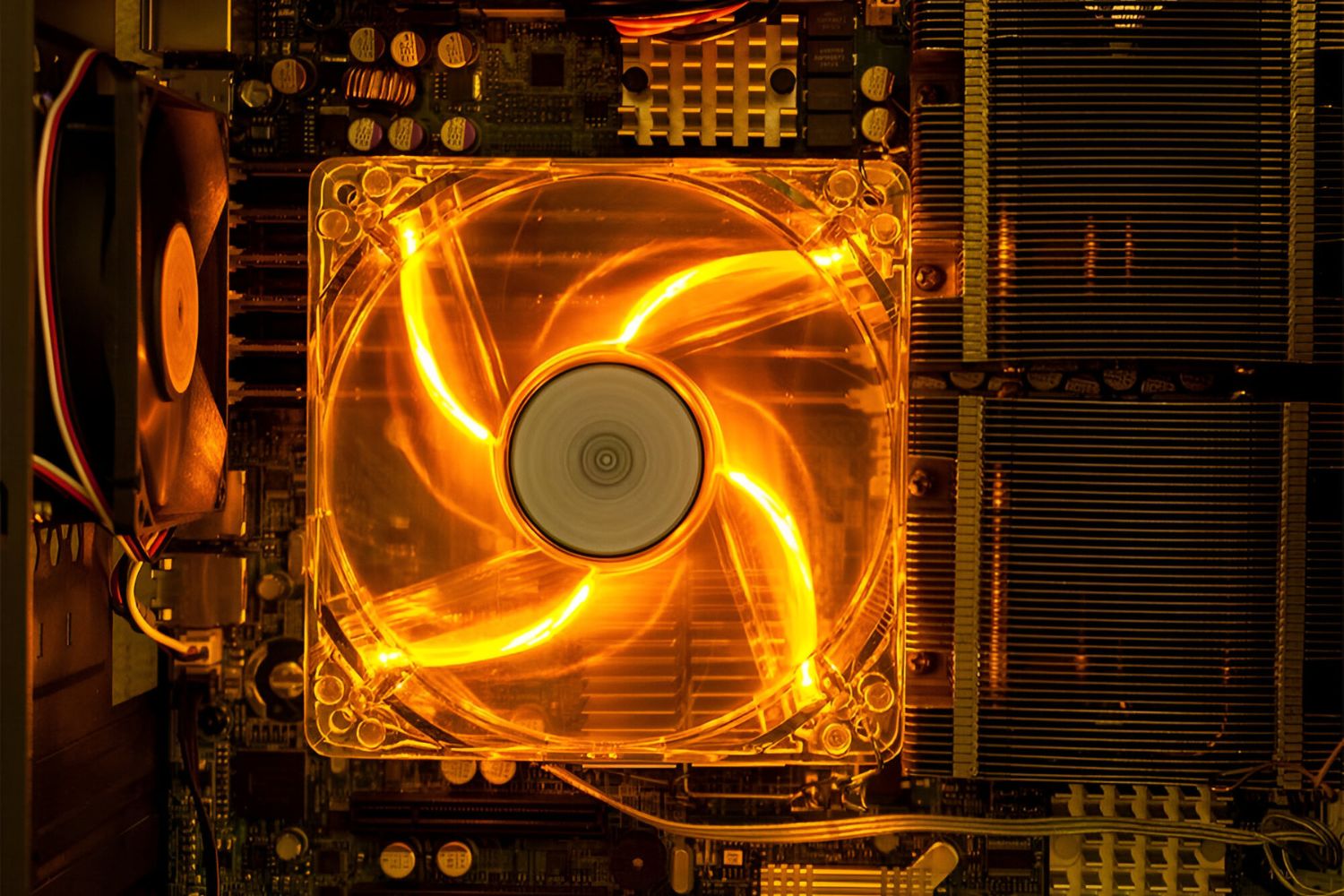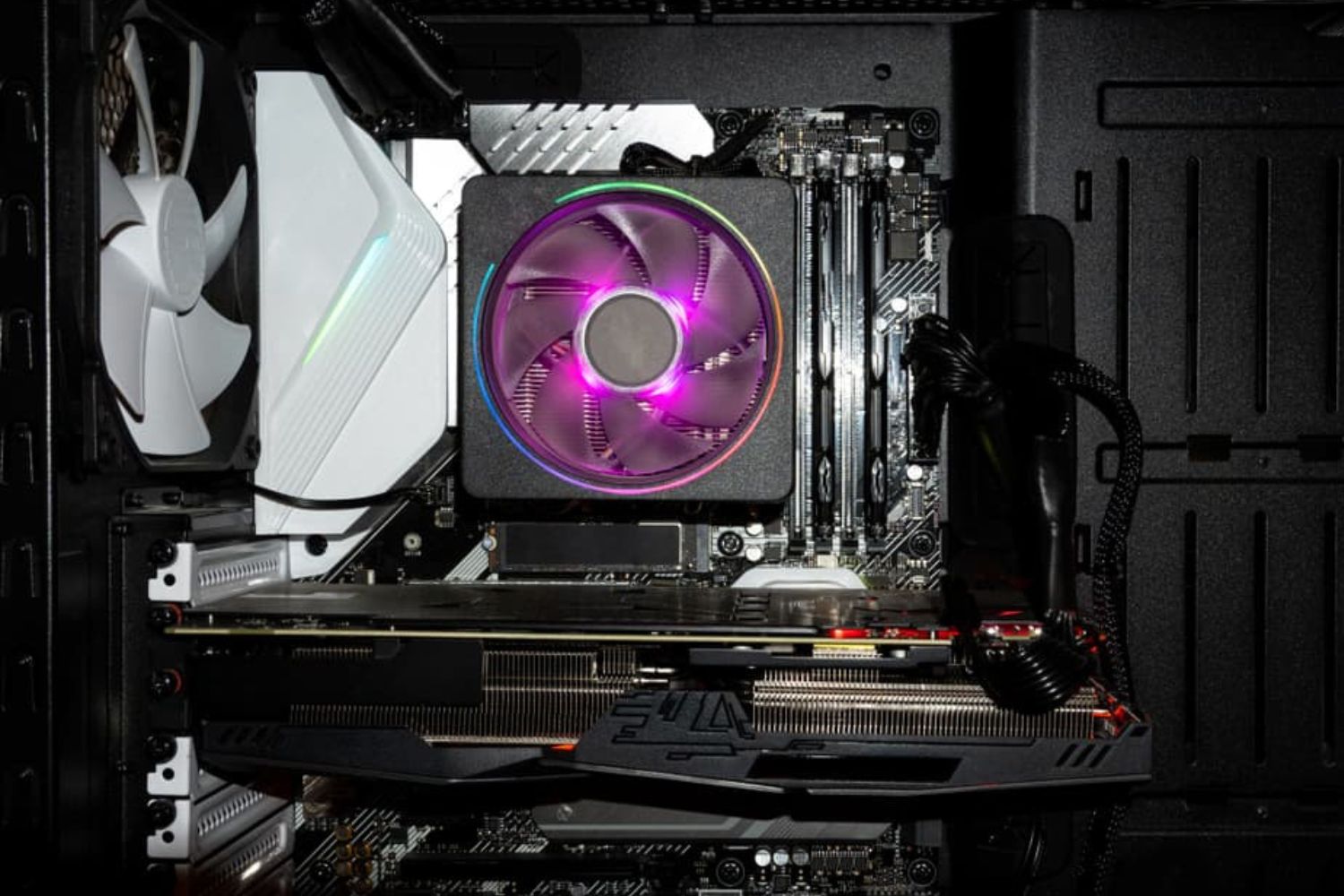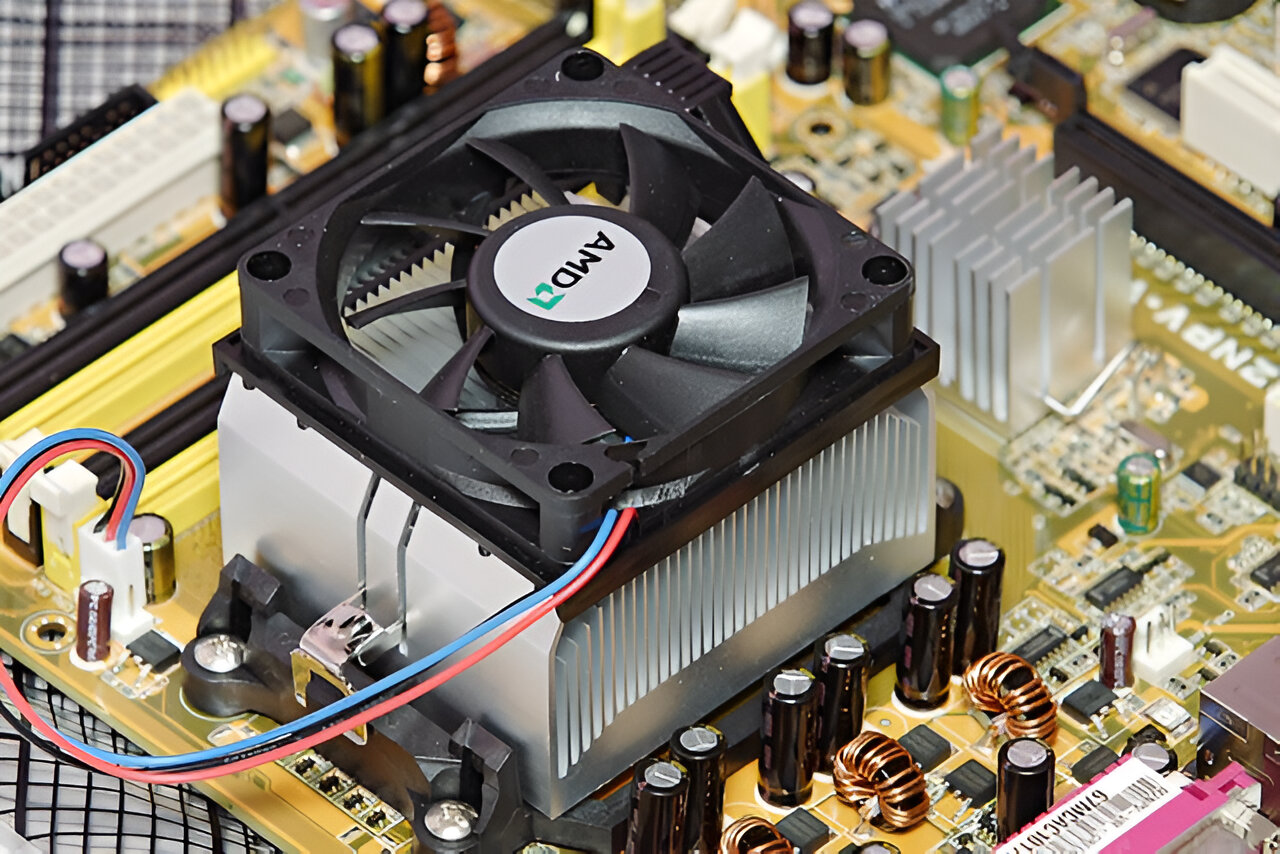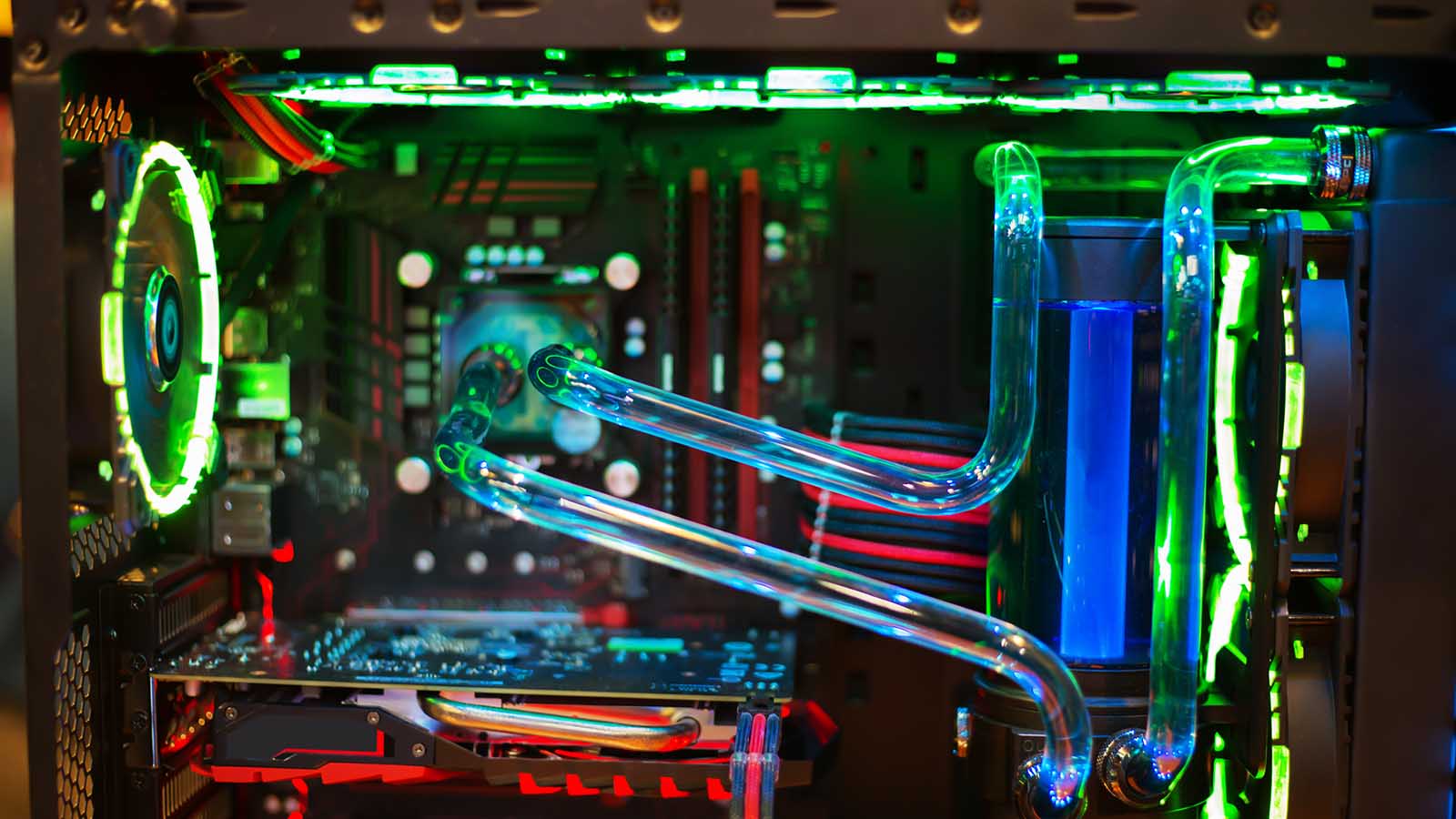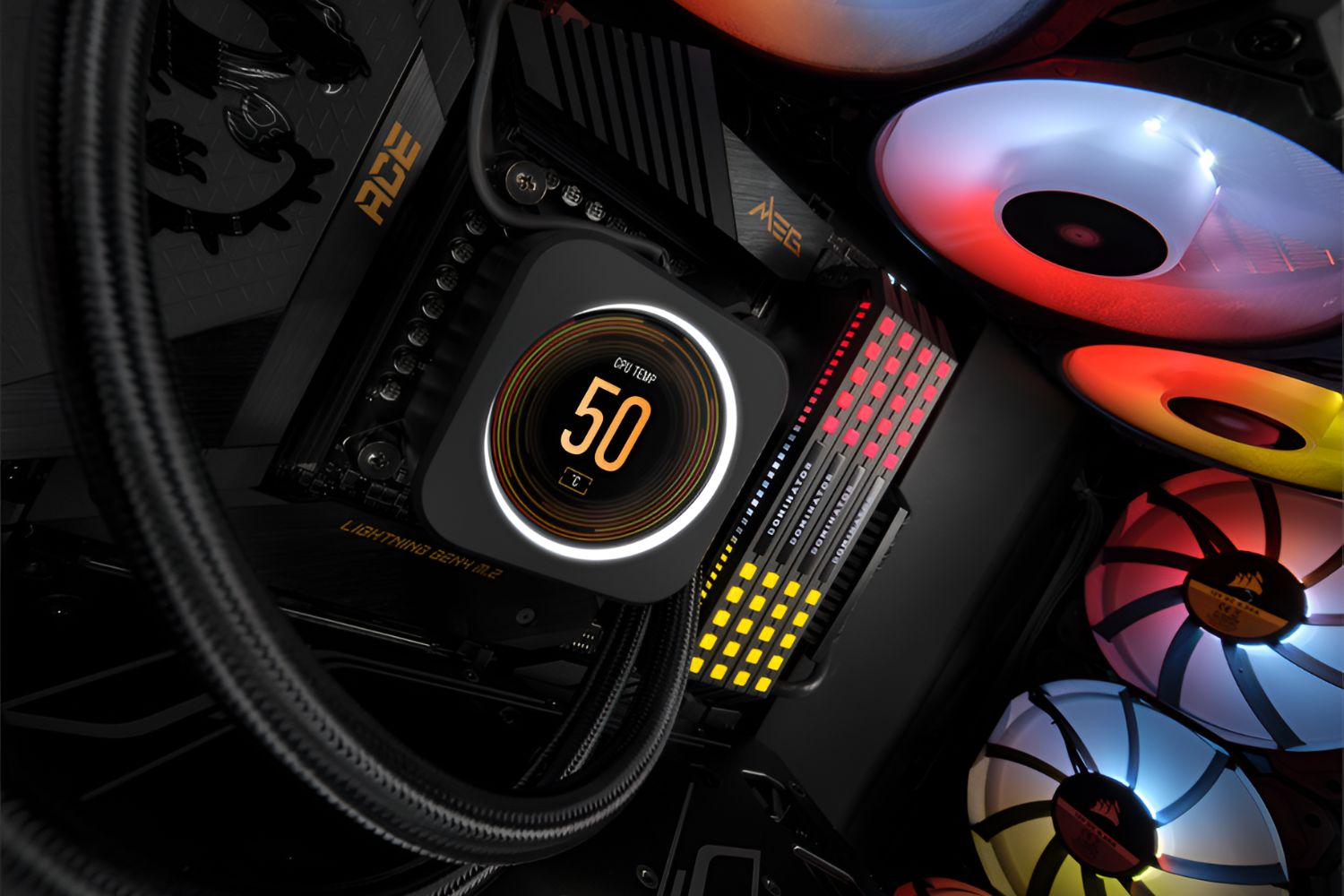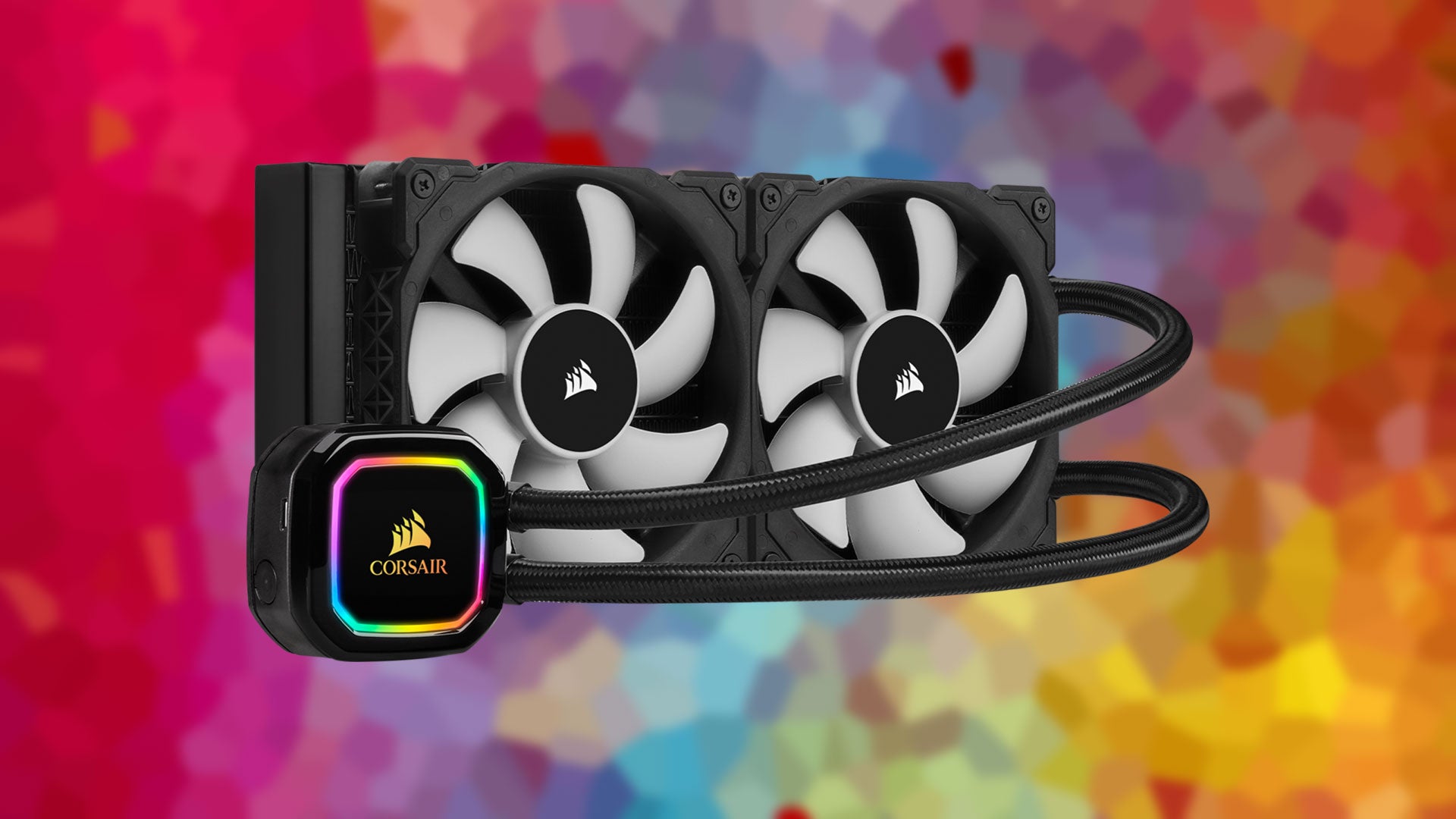Introduction
When it comes to keeping your CPU cool and maximizing its performance, a traditional air cooling system may not always suffice. This is where a liquid CPU cooler comes into play. If you’re unfamiliar with liquid cooling, don’t worry! In this article, we’ll explore what exactly a liquid CPU cooler is and why it is gaining popularity among PC enthusiasts.
A liquid CPU cooler, also known as an AIO (All-In-One) cooler, is a cooling system designed to dissipate the heat generated by your CPU using liquid coolant and a series of components. Unlike air cooling, which relies on a heatsink and fans to cool down the CPU, a liquid CPU cooler utilizes liquid coolant to efficiently carry heat away from the processor.
Liquid CPU coolers consist of several important parts, including a pump, radiator, fans, cold plate, and tubes. Each component plays a crucial role in the cooling process, ensuring that your CPU stays at optimal temperatures even during heavy usage or overclocking.
The pump is the heart of the liquid CPU cooler, responsible for circulating the coolant throughout the system. It ensures that the liquid flows smoothly, transferring heat away from the CPU to the radiator. The radiator acts as a heat exchanger, using fins and a series of tubes to dissipate the heat absorbed by the coolant. Fans are mounted on the radiator to provide airflow, further aiding in heat dissipation.
The cold plate, typically made of copper or aluminum, is in direct contact with the CPU. It acts as a bridge between the processor and the coolant, facilitating efficient heat transfer. The tubes connect the components, allowing the coolant to flow through the system, ensuring a continuous cooling cycle.
In the next sections, we will delve into how a liquid CPU cooler works, its benefits, and why it’s becoming a popular choice for cooling enthusiasts and gamers alike. By the end of this article, you’ll have a better understanding of this innovative cooling solution and whether it’s the right choice for your PC.
What is a Liquid CPU Cooler?
A liquid CPU cooler, as mentioned earlier, is a cooling system designed to keep your CPU at optimal temperatures. It achieves this by using liquid coolant instead of traditional air cooling methods. The liquid coolant, usually a mixture of water and additives like ethylene glycol or propylene glycol, is circulated through the cooler’s components to dissipate the heat generated by the CPU.
One of the primary advantages of a liquid CPU cooler is its ability to handle higher heat loads more efficiently. Unlike air coolers, which rely on heat dissipation through metal fins and fans, liquid coolers provide a more effective means of removing heat from the CPU. By using a fluid that can absorb and transfer heat more efficiently than air, liquid CPU coolers can achieve better cooling performance, especially under heavy workloads.
Liquid CPU coolers typically consist of an AIO (All-In-One) unit, meaning that the components necessary for cooling are pre-assembled and sealed. This makes installation much simpler compared to custom liquid cooling setups, which require extensive knowledge and planning. The compact design of AIO liquid CPU coolers also allows for easy integration into most PC cases, making them suitable for a wide range of systems.
Furthermore, liquid CPU coolers offer more flexibility in terms of placement and orientation. With traditional air coolers, the orientation of the heatsink and fans could be limited by space constraints or the arrangement of other components. On the other hand, liquid coolers allow for greater flexibility in mounting the radiator and fans in the most optimal configuration for optimal heat dissipation.
Overall, liquid CPU coolers provide several benefits over traditional air cooling systems. They offer improved cooling performance, quieter operation, space-saving designs, effective heat dissipation, and better overclocking capability. In the following sections, we will delve deeper into each of these advantages, giving you a more comprehensive understanding of why liquid CPU coolers have become a popular choice for PC builders and gaming enthusiasts.
Parts of a Liquid CPU Cooler
To better understand how a liquid CPU cooler functions, let’s take a closer look at its various components. A liquid CPU cooler typically consists of the following parts:
1. Pump: The pump is the heart of the liquid CPU cooler. It is responsible for circulating the coolant throughout the system. By actively moving the liquid, the pump ensures that heat is efficiently transferred from the CPU to the radiator for dissipation.
2. Radiator: The radiator acts as a heat exchanger. It is usually made up of a series of thin metal fins that are arranged to increase surface area. Coolant flows through the radiator, and as it passes through the fins, heat is transferred from the fluid to the surrounding air. The larger the radiator, the greater the heat dissipation capacity.
3. Fans: Fans are an integral part of the liquid CPU cooling system. They are mounted on the radiator and provide airflow to facilitate the heat dissipation process. By blowing air over the radiator fins, fans help remove the heat absorbed by the coolant. Some liquid CPU coolers come with multiple fans for enhanced cooling performance.
4. Cold Plate: The cold plate, also known as the contact plate, is typically made of copper or aluminum. It is directly in contact with the CPU, allowing for efficient heat transfer. The cold plate is responsible for absorbing heat from the CPU and transferring it to the coolant flowing through the liquid CPU cooler.
5. Tubes: Tubes are used to connect the various components of the liquid CPU cooler. They allow the coolant to flow through the system in a continuous cycle. The tubes are designed to withstand high temperatures and are often made of durable materials like reinforced rubber or flexible plastic.
By working together, these components ensure efficient heat transfer and dissipation, keeping your CPU cool under heavy workloads. The pump circulates the coolant, carrying heat from the CPU to the radiator. The radiator then uses the fans and the surrounding air to dissipate the heat, while the cold plate facilitates heat transfer from the CPU to the coolant.
Now that we have covered the parts of a liquid CPU cooler, we can dive deeper into how this cooling system works and the benefits it offers in the following sections.
Pump
The pump is a crucial component of a liquid CPU cooler. As the central unit, it is responsible for circulating the coolant throughout the cooling system. Its primary function is to maintain a continuous flow of the liquid, ensuring efficient heat transfer from the CPU to the radiator for dissipation.
The pump works by utilizing an impeller, which is usually powered by a small electric motor. When activated, the impeller rotates, creating a centrifugal force that pushes the liquid coolant through the system. The pump is designed to handle the flow rate and pressure required for optimal cooling performance, ensuring that the coolant reaches all parts of the CPU cooler.
A well-designed pump is essential for efficient cooling. It should be able to provide adequate flow rate to transfer heat effectively and maintain a consistent temperature. Pump speed can be adjusted in some liquid CPU coolers, allowing users to find the optimal balance between cooling performance and noise level.
It’s worth noting that different liquid CPU coolers may use different types of pumps. There are two common types: centrifugal and magnetic. Centrifugal pumps are more commonly found in liquid CPU coolers. They use rotating impellers to push the coolant through the system. Magnetic pumps, on the other hand, utilize magnetic fields to move the liquid, eliminating the need for rotating parts and reducing the risk of failure or leakage.
Proper maintenance is essential to ensure the longevity and performance of the pump. It is important to regularly clean the pump, removing any debris or buildup that may impede its operation. Additionally, monitoring the pump’s performance and ensuring proper power supply is crucial to prevent any issues with coolant circulation.
In summary, the pump plays a vital role in a liquid CPU cooler. It ensures the smooth circulation of the coolant, allowing for efficient heat transfer from the CPU to the radiator for dissipation. By maintaining a steady flow of coolant, the pump contributes to the overall cooling performance of the liquid CPU cooler, keeping your CPU at optimal temperatures even during demanding tasks.
Radiator
The radiator is a key component of a liquid CPU cooler, responsible for dissipating the heat absorbed by the coolant. It consists of a series of thin metal fins arranged in a way that maximizes surface area for efficient heat transfer.
The primary function of the radiator is to cool down the hot liquid coolant that has absorbed heat from the CPU. As the coolant flows through the radiator, the fins facilitate the transfer of heat to the surrounding air. This process is aided by the airflow generated by the fans attached to the radiator.
Radiators come in various sizes, typically ranging from 120mm to 360mm, with larger radiators providing greater cooling capacity. The choice of radiator size depends on factors like available space inside the PC case and desired cooling performance. Generally, larger radiators tend to provide better heat dissipation, allowing for lower CPU temperatures.
The efficiency of a radiator depends not only on its size but also on the density of the fins. High-fin density radiators have more fins per inch, providing a larger surface area for heat transfer. However, higher fin density can also restrict airflow, leading to increased resistance and potentially louder fan noise. Strike a balance between fin density and airflow to ensure optimal cooling performance without excessive noise.
It is crucial to keep the radiator clean and free from dust or debris that can impede airflow. Regular maintenance, such as dusting or using compressed air, will help maintain optimal cooling efficiency. Additionally, radiator placement within the PC case also impacts cooling performance. Mounting the radiator in a way that allows for unrestricted airflow, such as at the front or top of the case, ensures maximum heat dissipation.
Overall, the radiator is an essential component of a liquid CPU cooler, working in conjunction with the pump, fans, and coolant to regulate CPU temperatures. By efficiently dissipating heat absorbed by the coolant, the radiator plays a crucial role in keeping your CPU cool, enhancing overall performance, and enabling longer system lifespan.
Fans
Fans are a vital aspect of a liquid CPU cooler, working in tandem with the radiator to facilitate effective heat dissipation. They help create airflow, which aids in the cooling process by removing heat from the system.
The fans in a liquid CPU cooler are typically mounted onto the radiator. These fans draw cool air from the environment and pass it through the radiator’s fins. As the air moves across the fins, it absorbs the heat from the coolant, carrying it away from the system. The heated air is then expelled out of the case, allowing for continuous cooling.
The performance of the fans is influenced by several factors, including their size, speed, and airflow capacity. Fans are available in various sizes, such as 120mm and 140mm, with larger fans generally being able to move more air. Additionally, fans with higher RPM (revolutions per minute) ratings tend to generate more airflow, providing increased cooling potential.
The number of fans used in a liquid CPU cooler can vary. Some coolers feature a single fan, while others employ dual or even triple fan setups. Multiple fans can enhance cooling performance by increasing airflow and improving heat dissipation from the radiator.
To strike a balance between cooling performance and noise level, many fans offer adjustable speeds. This allows users to control the fan RPM, optimizing the cooling performance according to their preferences and system requirements. Additionally, fans with improved designs, such as low-noise bearings or specially shaped blades, contribute to quieter operation while maintaining efficient cooling.
Proper fan configuration is crucial for optimal cooling. Placing fans in a push-pull configuration, with one set of fans pushing cool air through the radiator and another set pulling hot air away, can lead to improved cooling efficiency. The arrangement of fans can vary depending on the specific liquid CPU cooler and the PC case’s design.
Regular cleaning and maintenance of the fans are essential to ensure optimal cooling performance. Dust and debris can accumulate on the fan blades, restricting airflow and decreasing cooling efficiency. Regularly dusting or using compressed air to clean the fans helps maintain their effectiveness.
In summary, fans play a critical role in the functioning of a liquid CPU cooler. By generating airflow and facilitating heat dissipation from the radiator, fans contribute to keeping your CPU temperatures in check. Choosing the right fan size, speed, and configuration, along with regular maintenance, ensures efficient cooling performance while minimizing noise levels.
Cold Plate
The cold plate, also known as the contact plate, is a vital component of a liquid CPU cooler. It serves as the interface between the CPU and the liquid coolant, facilitating efficient heat transfer from the processor to the circulating liquid.
Typically made of copper or aluminum, the cold plate makes direct contact with the CPU surface. It is designed with a smooth, flat surface to ensure maximum contact area and optimal heat transfer. The cold plate’s material has excellent thermal conductivity, allowing it to absorb and distribute heat quickly.
To enhance heat transfer, the cold plate often incorporates a technology called microfin design. Microfins are tiny, low-profile fins etched into the surface of the cold plate. These microfins increase the surface area and maximize contact with the liquid coolant, increasing the efficiency of heat transfer.
The cold plate connects to the liquid loop, allowing the coolant to flow directly over the CPU surface. As the liquid absorbs the heat from the CPU, it is then directed to the radiator for dissipation. The continuous flow of the coolant ensures efficient cooling and prevents the CPU from overheating.
Installing the cold plate correctly is crucial for optimal performance. Improper installation, such as uneven contact or incorrect mounting pressure, can lead to inefficient heat transfer and increased CPU temperatures. It is essential to follow the manufacturer’s instructions and utilize the appropriate mounting mechanism for the specific CPU socket.
Maintenance of the cold plate is relatively straightforward. Occasionally, the paste used for thermal conductivity between the CPU and the cold plate may degrade. In such cases, it is recommended to clean the old thermal paste and apply a fresh layer to ensure proper heat transfer.
Overall, the cold plate plays a critical role in the liquid CPU cooling system. It enables direct contact with the CPU, allowing for efficient heat transfer to the liquid coolant. The material, design, and proper installation of the cold plate ensure effective cooling performance, keeping your CPU at stable temperatures under demanding workloads or overclocking scenarios.
Tubes
Tubes are an essential component of a liquid CPU cooler, responsible for connecting the various parts of the cooling system and allowing the coolant to flow through the loop. These flexible tubes are designed to withstand high temperatures and ensure the smooth circulation of the liquid coolant.
The primary function of the tubes is to carry the liquid coolant from the pump to the cold plate and then to the radiator. The flow of coolant is crucial for effective heat transfer from the CPU to the radiator for dissipation. The tubes are designed to minimize resistance and maintain constant coolant flow, ensuring efficient cooling performance.
Manufacturers typically use reinforced rubber or flexible plastic materials for the tubes. These materials are not only durable but also resistant to corrosion and heat. The flexibility of the tubes allows for convenient installation and positioning of the liquid CPU cooler within various computer cases.
The length and diameter of the tubes can vary depending on the liquid CPU cooler model. Longer tubes offer more flexibility in terms of placement and reduce strain on the system. Larger diameter tubes allow for a higher volume of coolant flow, improving the overall cooling efficiency of the system.
Proper tube routing and positioning are essential to ensure optimal cooling performance. Tubes should be routed in a way that doesn’t obstruct other components or impede airflow. They should also be secured properly to prevent any accidental disconnection during system operation. It is advisable to follow the manufacturer’s instructions for tube placement and routing.
Regular inspection of the tubes is important to detect any signs of damage or leakage. While the tubes are designed to be durable, wear and tear over time can lead to potential issues. In the event of a damaged tube, it is crucial to replace it promptly to maintain the integrity of the cooling system and prevent any leaks that could damage other components.
In summary, tubes play a vital role in the liquid CPU cooling system. They connect the pump, cold plate, and radiator, allowing for continuous circulation of the liquid coolant. By ensuring the smooth flow of the coolant, the tubes contribute to efficient heat transfer and effective cooling of the CPU, keeping temperatures in check and enhancing overall system performance.
How Does a Liquid CPU Cooler Work?
A liquid CPU cooler operates on a simple yet efficient principle: it uses liquid coolant to transfer heat away from the CPU and dissipate it through the radiator. This process involves the collaboration of several components working together seamlessly.
The liquid CPU cooler starts with the pump, which circulates the liquid coolant throughout the system. The pump pushes the coolant from the cold plate, where it absorbs the heat from the CPU, to the radiator where heat dissipation occurs. The constant flow of coolant ensures that heat is continuously carried away from the CPU.
The liquid coolant, typically a mixture of water and additives, enters the cold plate and comes into direct contact with the CPU. As the coolant moves over the CPU surface, it absorbs the heat generated by the processor. The heat is then transferred to the liquid, cooling the CPU in the process.
From the cold plate, the heated coolant is directed into the tubes, which connect the other components of the liquid CPU cooler. The tubes transport the hot liquid to the radiator, where the heat dissipation occurs.
The radiator, consisting of thin metal fins, acts as a heat exchanger. As the heated coolant flows through the radiator, the fins increase the surface area available for heat transfer. Simultaneously, fans mounted on the radiator blow cool air over the fins, accelerating the heat dissipation process. The heated air is then expelled out of the case, maintaining a constant flow of fresh cool air over the radiator.
The continuous cycle of this coolant flow results in effective heat transfer away from the CPU. The pump, cold plate, tubes, and radiator work together to continually remove heat, preventing the CPU from reaching critical temperatures and ensuring optimal performance.
The efficiency of a liquid CPU cooler depends on factors such as the size and design of the radiator, the effectiveness of the fans, and the reliability of the pump. By effectively transferring heat and dissipating it through the radiator, a liquid CPU cooler provides superior cooling performance compared to traditional air cooling methods.
In summary, a liquid CPU cooler removes heat from the CPU by utilizing liquid coolant, which absorbs heat from the processor. This heated coolant is then directed to the radiator, where heat dissipation occurs with the help of fans. The constant circulation of the coolant through the cooling components ensures efficient cooling and helps maintain optimal CPU temperatures.
Benefits of using a Liquid CPU Cooler
Liquid CPU coolers, also known as AIO (All-In-One) coolers, offer several advantages over traditional air cooling methods. These benefits make them a popular choice among PC enthusiasts and gamers. Let’s explore the key advantages of using a liquid CPU cooler:
1. Improved Cooling Performance: Liquid CPU coolers have superior cooling capabilities compared to air coolers. The use of liquid coolant allows for more efficient heat transfer, resulting in lower CPU temperatures. This enhanced cooling performance is particularly beneficial for users who engage in heavy multitasking, video editing, gaming, or CPU-intensive tasks.
2. Quieter Operation: Liquid CPU coolers are generally quieter than air coolers. The absence of bulky fans directly attached to the CPU allows for reduced noise levels. The fans on the radiator can be strategically positioned or equipped with noise-reducing features to minimize noise while maintaining efficient cooling.
3. Space-saving Design: Liquid CPU coolers feature a compact design, making them suitable for systems with limited space. With the radiator and fans mounted externally, they don’t occupy valuable CPU socket space or interfere with other components. This allows for easier installation and potentially opens up more options for customization or additional components.
4. Effective Heat Dissipation: The radiator in a liquid CPU cooler dissipates heat more effectively than traditional air coolers. The larger surface area provided by the radiator’s fins, coupled with the airflow generated by the fans, allows for rapid heat dissipation. This ensures that the CPU stays cool even during intense workloads or overclocking scenarios.
5. Overclocking Capability: Liquid CPU coolers are well-suited for overclocking, as they can handle higher heat loads more efficiently. Overclocking involves increasing the CPU’s clock speed, which generates additional heat. Liquid coolers excel at dissipating this extra heat, enabling users to push their CPUs to higher frequencies for improved performance.
Overall, liquid CPU coolers offer a range of benefits, including improved cooling performance, quieter operation, space-saving design, effective heat dissipation, and overclocking capability. These advantages make liquid CPU coolers a popular choice for users seeking enhanced cooling efficiency and optimal CPU performance in their systems.
Improved Cooling Performance
One of the significant benefits of using a liquid CPU cooler is its ability to provide improved cooling performance compared to traditional air cooling methods. Liquid coolers use a combination of liquid coolant and specialized components to efficiently transfer heat away from the CPU and maintain lower temperatures during intensive tasks or high overclocking settings.
The primary reason liquid CPU coolers offer better cooling performance is the superior heat transfer properties of liquid compared to air. Liquid coolant has a higher heat capacity, meaning it can absorb and carry away more heat per unit volume than air. This allows the liquid to effectively dissipate the heat generated by the CPU, resulting in lower temperatures and better thermal management.
The use of liquid coolant also provides more uniform cooling across the CPU surface. Traditional air coolers rely on heat pipes that transfer heat to a metal heatsink, with the heat dissipated by fans. However, this method can lead to uneven cooling, with some areas of the CPU experiencing higher temperatures than others. In contrast, liquid CPU coolers use a cold plate that makes direct contact with the CPU, ensuring efficient heat transfer and uniform cooling.
Liquid CPU coolers also have larger radiators with more surface area compared to air coolers. The increased surface area allows for better heat dissipation, as the liquid coolant exposed to the radiator’s fins can transfer more heat to the surrounding air. Paired with high-performance fans, liquid CPU coolers can effectively remove heat from the system, maintaining lower CPU temperatures under heavy workloads and demanding applications.
Furthermore, liquid CPU coolers are more capable of handling higher heat loads. This is especially beneficial for users who engage in intensive tasks like gaming, video editing, or 3D rendering that put a significant strain on the CPU. With their improved cooling performance, liquid coolers ensure that the CPU remains within safe temperature limits, preventing thermal throttling and maintaining optimal performance.
In summary, liquid CPU coolers offer significantly improved cooling performance compared to traditional air coolers. The use of liquid coolant, direct contact cold plates, larger radiators, and high-performance fans allow for more efficient heat transfer and dissipation. This results in lower CPU temperatures, better thermal management, and the ability to handle higher heat loads, ensuring optimal performance even under demanding workloads or during overclocking scenarios.
Quieter Operation
Another significant advantage of using a liquid CPU cooler is its quieter operation compared to traditional air coolers. The absence of bulky fans attached directly to the CPU and the use of larger radiator-mounted fans contribute to a reduction in noise levels, providing a more pleasant computing experience.
Air coolers typically consist of one or more fans directly attached to the heatsink, which can generate significant noise when running at higher speeds. This noise is caused by the air turbulence and the sound of the fans’ motors. In contrast, liquid CPU coolers feature fans mounted on the radiator, which is situated away from the CPU socket. As a result, the noise generated by the fans is further from the user’s ears, leading to a quieter operation.
Furthermore, liquid CPU coolers often utilize larger fans with a lower RPM (revolutions per minute) range. The larger fan blades can move a greater volume of air at lower speeds, reducing noise levels while maintaining effective cooling. Additionally, the larger radiators in liquid CPU coolers provide additional surface area for heat dissipation, allowing the fans to operate at lower speeds without compromising cooling performance.
To further minimize noise, liquid CPU coolers often incorporate advanced fan design features such as specially-shaped fan blades or noise-dampening materials. These features help reduce airflow turbulence and dampen vibrations, resulting in quieter operation. Some liquid CPU coolers also offer adjustable fan speed controls so that users can fine-tune the performance and noise levels based on their specific requirements.
The quieter operation of liquid CPU coolers is particularly appreciated by users who prioritize a quiet computing environment, such as content creators, professionals working in noise-sensitive environments, or individuals who prefer a more serene gaming experience. It allows for better concentration, reduces distractions, and makes it easier to focus on the tasks at hand.
In summary, liquid CPU coolers offer quieter operation compared to traditional air coolers. By relocating the fans away from the CPU and employing larger, lower RPM fans on the radiator, they minimize the noise generated during operation. With additional features like advanced fan blade designs and noise-dampening materials, liquid CPU coolers provide a quieter computing experience without compromising cooling performance.
Space-saving Design
Liquid CPU coolers offer a space-saving design compared to traditional air coolers, making them a preferred choice for compact PC systems with limited space. Their compact form factor and flexible installation options provide users with greater freedom in system design and component arrangement.
Unlike air coolers, which consist of large heatsinks and fans directly attached to the CPU socket, liquid CPU coolers utilize a radiator that can be conveniently mounted externally in the case. This external positioning of the radiator allows for more flexibility in choosing where to install the cooler, as it doesn’t interfere with the CPU socket or obstruct other components on the motherboard.
Due to their space-saving design, liquid CPU coolers offer additional advantages when it comes to building compact systems or working with smaller form factor cases. In mini-ITX builds, where space is at a premium, liquid coolers provide an effective cooling solution without compromising on PC size.
With liquid CPU coolers, users also have more options for component compatibility. By removing the bulky heatsink commonly found in air coolers, there is more room to accommodate other components, such as tall RAM modules or large graphics cards. This flexibility is particularly beneficial for users who require specialized components or wish to customize their system configurations.
Furthermore, the compact design of liquid CPU coolers allows for easier installation and maintenance. They typically come as All-In-One (AIO) units, meaning they are pre-assembled and sealed at the factory. This eliminates the need for complex installation procedures and reduces the risk of improper installation. Users can simply mount the radiator and connect the tubes, saving valuable time and effort during the build process.
In summary, liquid CPU coolers feature a space-saving design compared to traditional air coolers. With their external radiator mounting and compact form factor, they provide more flexibility in system design, improved component compatibility, and easier installation. This makes them an ideal choice for compact PC systems or users seeking a space-efficient cooling solution without compromising performance or customization options.
Effective Heat Dissipation
One of the key benefits of using a liquid CPU cooler is its effective heat dissipation capabilities. Liquid coolers are designed to efficiently transfer and dissipate heat generated by the CPU, ensuring optimal thermal management and maintaining lower operating temperatures.
Liquid CPU coolers achieve effective heat dissipation through their use of a larger radiator and specialized fans. The radiator is designed with thin metal fins that offer a larger surface area for heat transfer. As the liquid coolant flows through the radiator, heat is transferred from the coolant to the surrounding air. This process is enhanced by the presence of fans mounted on the radiator, which facilitate airflow over the fins, accelerating the heat dissipation process.
The larger radiator size in liquid CPU coolers allows for improved heat dissipation compared to traditional air coolers. The increased surface area and the airflow generated by the fans ensure efficient heat removal from the system. With larger radiators, liquid coolers can handle higher heat loads and maintain lower CPU temperatures, even under heavy workloads or demanding applications.
Furthermore, liquid CPU coolers offer the advantage of better temperature control. Since liquid coolers utilize liquid coolant that can absorb and carry away more heat than air, they provide more precise temperature regulation. This is particularly important for users who engage in tasks that subject their CPUs to varying loads or overclocking scenarios.
Liquid CPU coolers also have an advantage when it comes to dissipating heat from the CPU evenly. Traditional air coolers rely on heat pipes that contact only certain areas of the CPU surface, leading to potentially uneven cooling. In contrast, liquid coolers utilize a cold plate that makes direct contact with the CPU, allowing for more uniform heat transfer and dissipation across the entire CPU surface.
Overall, liquid CPU coolers excel at effective heat dissipation. Their larger radiator size, coupled with specialized fans, ensures efficient heat removal from the system. This results in lower CPU temperatures, improved thermal management, and the ability to handle higher heat loads without compromising performance or stability. Whether for demanding tasks, overclocking, or maintaining optimal CPU temperatures during prolonged computing sessions, liquid CPU coolers provide effective heat dissipation for enhanced system performance.
Overclocking Capability
Liquid CPU coolers offer excellent overclocking capabilities, making them a preferred choice for users looking to push their CPUs to higher frequencies and achieve optimal performance gains.
Overclocking involves increasing the clock speed of the CPU beyond its stock settings. This results in higher processing speeds and improved performance. However, overclocking generates more heat, as the CPU is operating at a higher power output. Traditional air coolers may struggle to dissipate this extra heat effectively, leading to increased temperatures and potential instability.
Liquid CPU coolers are specifically designed to handle the additional heat generated during overclocking. The use of liquid coolant and larger radiators with specialized fans allows for more efficient heat dissipation. The liquid coolant absorbs heat from the CPU and carries it away to the radiator, where the fans facilitate cooling by dissipating the heat into the surrounding air. This effective cooling performance helps maintain stable CPU temperatures, even during demanding overclocked scenarios.
Compared to traditional air coolers, liquid coolers provide a more consistent and reliable thermal management system during overclocking. While air coolers may struggle to keep temperatures in check under heavy loads, liquid coolers excel in maintaining optimal operating temperatures. This stability is crucial for ensuring system stability, longevity, and maximizing the potential performance gains obtained through overclocking.
Liquid CPU coolers also provide users with additional overclocking headroom. By effectively managing CPU temperatures, they allow users to push their CPUs to higher frequencies and voltages without reaching critical thermal limits. This means that users can safely and confidently experiment with higher overclocking settings, obtaining better overall performance and unlocking the true potential of their CPUs.
It’s worth noting that liquid CPU coolers not only enhance the overclocking potential of the CPU but also provide a more consistent and reliable overclocked experience. By maintaining lower temperatures, they help reduce the risk of thermal throttling, which can negatively impact system performance. Additionally, the stability provided by liquid cooler’s efficient heat dissipation enables users to enjoy extended overclocked sessions without encountering sudden performance drops due to excessive heat buildup.
In summary, liquid CPU coolers are well-suited for overclocking. Their efficient cooling performance and effective heat dissipation capabilities enable stable CPU temperatures even during demanding overclocked scenarios. Liquid coolers allow users to safely push their CPUs to higher frequencies and voltage levels, unlocking the full potential of their processors. Whether for gaming or other CPU-intensive tasks, liquid CPU coolers provide reliable thermal management for a successful overclocking experience.
Conclusion
Liquid CPU coolers offer a range of benefits that make them a popular choice among PC enthusiasts and gamers. They provide improved cooling performance, quieter operation, space-saving design, effective heat dissipation, and overclocking capabilities. By utilizing liquid coolant and specialized components, liquid CPU coolers efficiently transfer heat away from the CPU and maintain optimal temperatures, ensuring stable and reliable performance.
Through the use of liquid coolant, liquid CPU coolers enable better heat absorption and dissipation, resulting in lower CPU temperatures and improved thermal management. This enhanced cooling performance is particularly beneficial for users who engage in heavy multitasking, gaming, or CPU-intensive tasks.
Liquid CPU coolers also offer a quieter operation compared to traditional air coolers. By relocating the fans away from the CPU socket and utilizing larger, lower RPM fans on the radiator, liquid coolers minimize noise levels while maintaining effective cooling.
The space-saving design of liquid CPU coolers provides flexibility in system design and component arrangement. With the radiator mounted externally, liquid coolers allow for easier installation, compatibility with other components, and compact PC system builds.
Efficient heat dissipation is a hallmark of liquid CPU coolers. Larger radiators and specialized fans enable rapid heat transfer and dissipation, ensuring optimal CPU temperatures even under heavy workloads or overclocking scenarios.
Speaking of overclocking, liquid CPU coolers excel at handling higher heat loads, providing stability and creating headroom for users to push their CPUs to higher frequencies. This unlocks the full potential of the processor, resulting in improved performance and faster computing speeds.
In conclusion, liquid CPU coolers are an excellent cooling solution for users who prioritize enhanced performance, quieter operation, efficient heat dissipation, and overclocking capabilities. By effectively managing CPU temperatures, liquid coolers contribute to a more reliable, stable, and enjoyable computing experience.







